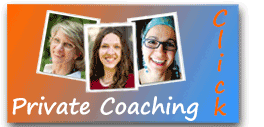Learning from Childhood Accidents

A little girl decided to take her puppy on a tricycle ride. She held the puppy in one arm and steered with the other as she rolled down a short hill with her feet up. When she hit the bottom of the hill, the trike lurched and the puppy flew out of her arms landing right in front of the front tire. She stopped, ran inside, and hid feeling scared and embarrassed.
The puppy was fine; the child was not.
How we respond to children after an accident makes all the difference in their ability to learn from their mistakes. When children run from an accident, it’s clear they didn’t want it to happen so you start there by SAYing WHAT YOU SEE:
SWYS: “You didn’t want that to happen. You thought you could keep the puppy safe and were surprised and scared when it flew out of your arms.”
A simple statement of children’s wants will help them get back in touch with their greater selves and regain the confidence to come out of hiding. Without the need for defensive posturing, children can open up and share their deeper fears about an accident like, “Did I kill the puppy?” or broader concerns about themselves like, “I never do anything right!”
“I” comments from children show a readiness to take responsibility, but not necessarily a readiness for a lecture about what they should have done. For best results, continue SAYing WHAT YOU SEE and add what the child did right:
Child: “Did I kill the puppy?”
SWYS: “No, but that must have been a very scary thought for you. You would never want to kill a puppy.” [When the child nods you can go on.] “And you know, I actually saw you save it. When the trike hit the bottom, I saw you put your feet down and stop the trike; all in an instant. Doing that saved the puppy.”
or
Child: “I never do anything right!”
SWYS: “That must be a terrible feeling, but it tells me you like to do things right.” [When the child nods you can go on.] “And you know, I actually saw you do something right!…” [Continue as above.]
Conversations like these bring children around to the point of problem solving. You know children are ready when they replay what they did right:
Child: “I did do that! I rode down the hill, and when I hit bottom, I stopped the trike.”
STRENGTH: “Yep. Now that you know what you can do when you have an accident…”
CAN DO: “…must be some way you can avoid having these kind of accidents altogether.”
Children feel helpless in the face of an accident. Stating what they want, telling them what they did right, and allowing them to solve their own problems puts them back on track to being the great kids we know they are.
P.S. This works for adults, too. See our SWYS personal growth blog entry Unshattering Your Confidence.





